Pete Evans makes it a hat-trick by looking at another underlever from a famous British gunmaker
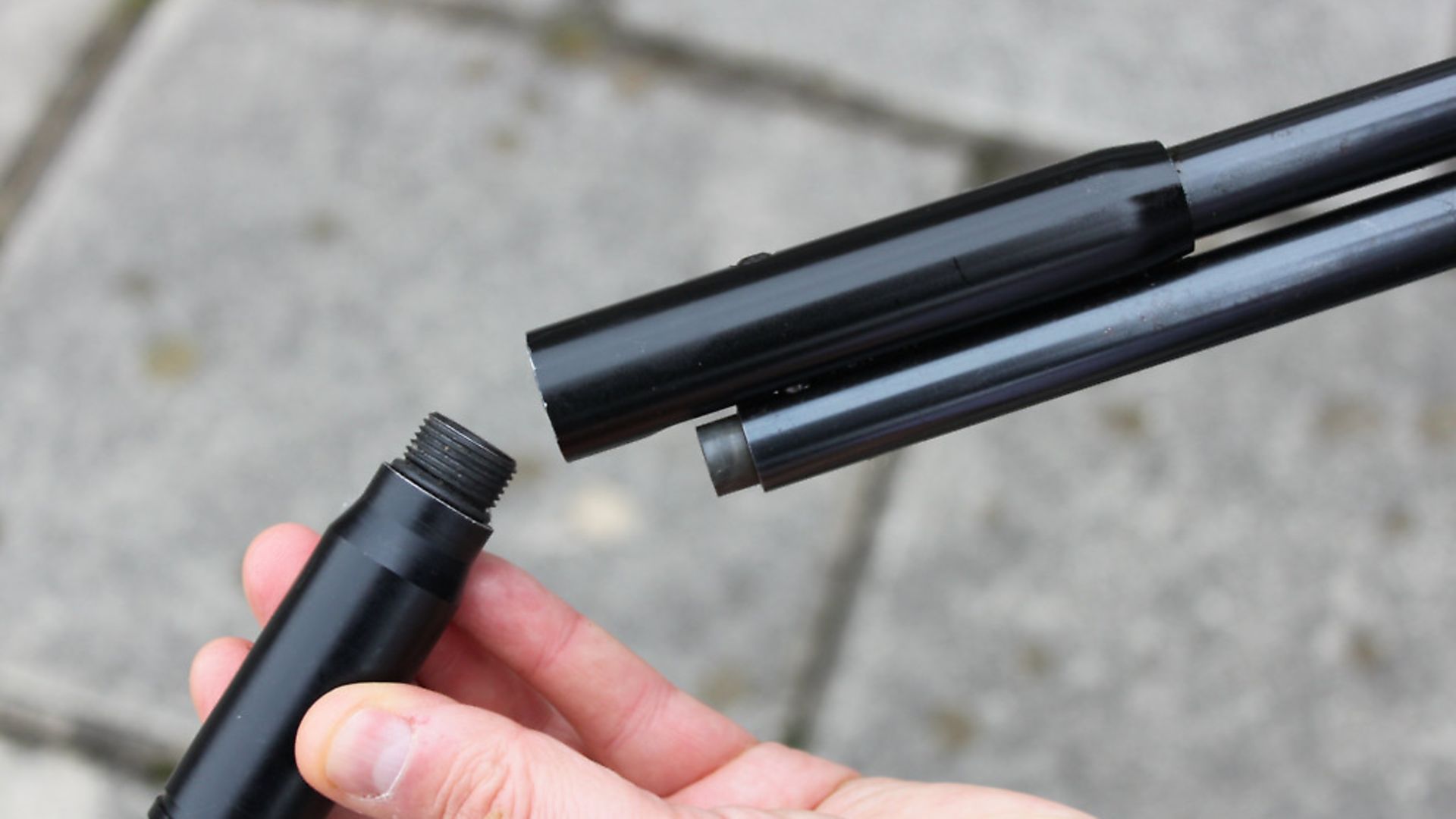 credit: Archant
credit: Archant
You don’t know what you’ve got until its gone’ is a sentiment echoed in song, and one that’s reflected in life. Such is the case with some air rifles, which are only fully appreciated long after they have ceased production. I believe one such rifle is the BSA Superstar.
The Superstar was launched in 1990 and was another British response to the HW77, which by then, had its feet firmly under the table as the rifle to own if you were serious about spring guns. This new underlever borrowed some parts from the Supersport, but in reality they really were a world apart.
I must confess that this rifle barely registered on my interest scale, which is a shame because I was missing something important. In my memory, it seems to have been eclipsed by the Air Arms TX also launched around the same time. Despite this stiff competition, they seem to have sold well, and although you don’t see them every day in the secondhand rack, they do come up for sale fairly regularly. This is good news for someone like me who failed to appreciate their appeal first time around.
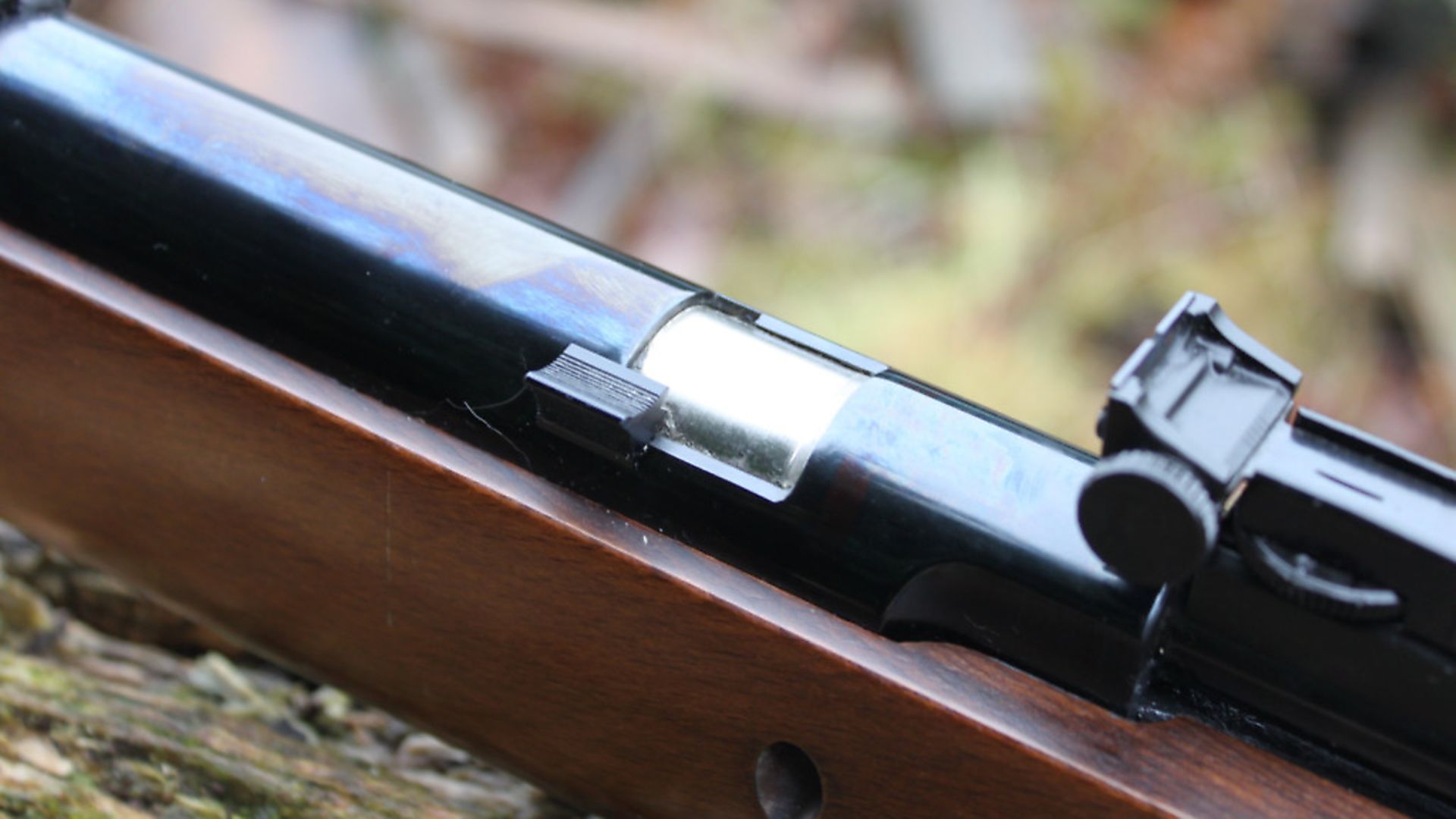 credit: Archant
credit: Archant
Future secure
By 1990 BSA had been under the ownership of Gamo for several years. Their presence secured BSA’s future and allowed them to develop several new rifles, containing innovative features, not least being their new rotary breech – more on which later.
One year following the launch of the Superstar, it was joined by the Goldstar – a 10-shot magazine-fed rifle with the same underlever cocking as the Superstar. Whilst on the subject of repeating air rifles, it’s worth mentioning that BSA dipped their toe in the water five years before this with the VS2000, but unfortunately this rifle never went into full production. Despite this, some of its design went on to be used in the Superten PCP.
During its production run, the Superstar evolved to a Mark 2 version, as well as being available in carbine form. It was offered in the standard .22 and .177 calibres, and interestingly, also the mighty .25. So what’s so good about this ‘star’? Let’s take a whistle stop tour of the main points before taking it for a test drive.
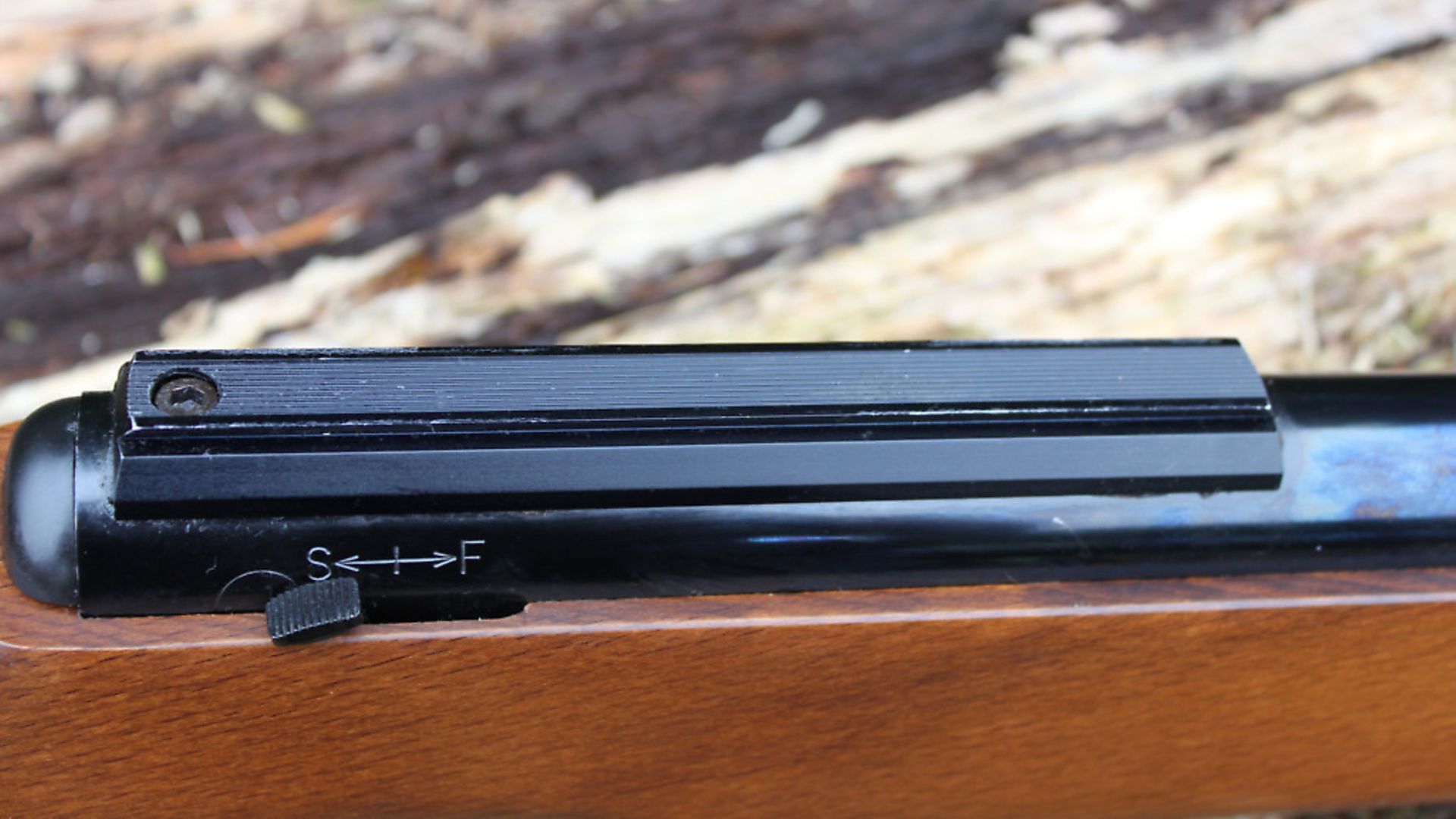 credit: Archant
credit: Archant
Star features
With vital statistics of 43ins and 8lbs in respect of length and weight, the Superstar is a full-size sporter. Couple these figures with a cylinder diameter of 30mm, and you have a recipe for a sporter that makes near legal limit power with ease. The overall weight of the rifle ensures that this power is delivered without drama, which is why it is very accurate in use.
Every gun needs a sighting system and on the Supersport there is varied choice. As standard, all the models came with BSA’s hallmark open sights – rear sight adjustable for elevation and windage, with a choice of ‘U’ shape or ‘V’ notch, together with a hooded foresight. That hood slides off quite easily, a little too easily perhaps because most of the ones I see are missing. They are available as replacements, although the original ones are easy to spot because they have a dimpled effect finish.
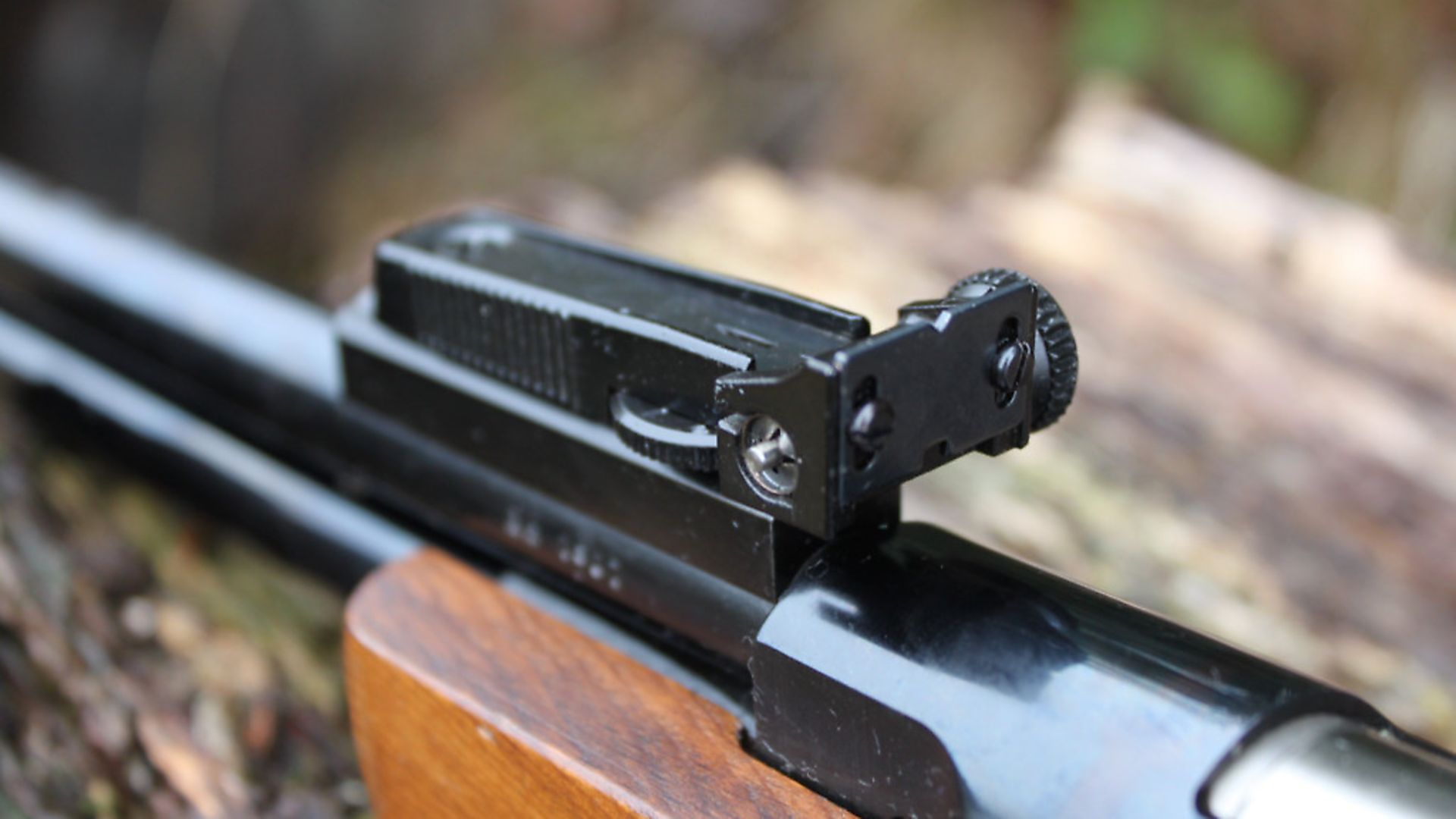 credit: Archant
credit: Archant
The underlever is held in place by a plunger system which engages with a peg mounted vertically under the barrel. It’s worth checking this area carefully because damage can occur if the underlever is constantly slammed into position; problems need not occur if it is extended a little mechanical sympathy, though. The catch is serviceable, and removal is achieved by drifting out a very small pin to release the plunger and spring. With the underlever locked into position, there should be no fear of dislodging, particularly important if a sling is fitted.
I mentioned earlier that the Supersport became available in two marks, and this is where the two models differ; the Mark 2 had a muzzle shroud fitted with a removable cap, and once unscrewed, a dedicated male threaded moderator could be fitted. This was another nod to the fact that this rifle was designed as a field gun, although perhaps a contentious issue. Personally, I don’t believe moderators are always necessary on a spring gun.
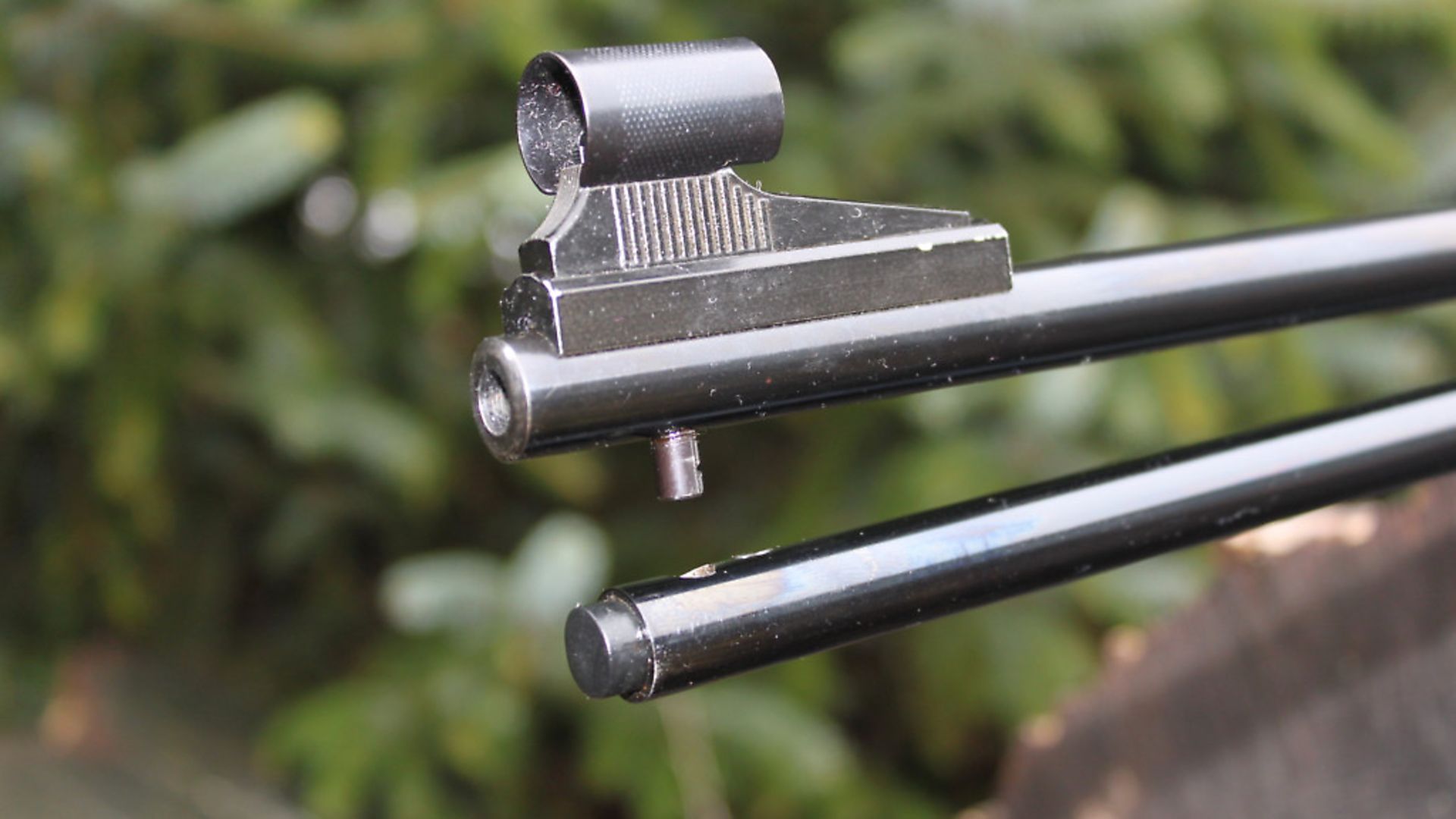 credit: Archant
credit: Archant
Rotating breech
Here is perhaps the one feature that marks such a departure from the accepted norm for BSA – the rotary breech. The underlever design was nothing new for BSA; let’s face it, there have been many variations on a theme, some with exposed levers, others enclosed within the stock, as with the Airsporter. All these forefathers had tap-style loading systems, criticised over the years for causing malalignment between the pellet and barrel, resulting in variable accuracy.
The rotary breech saw a more efficient loading system, with fewer worries about accuracy, and it has to be said, a very safe loading method. As with all things mechanical systems, there is the potential for abuse, and the loading procedure must follow a sequence which in reality is very easy to observe.
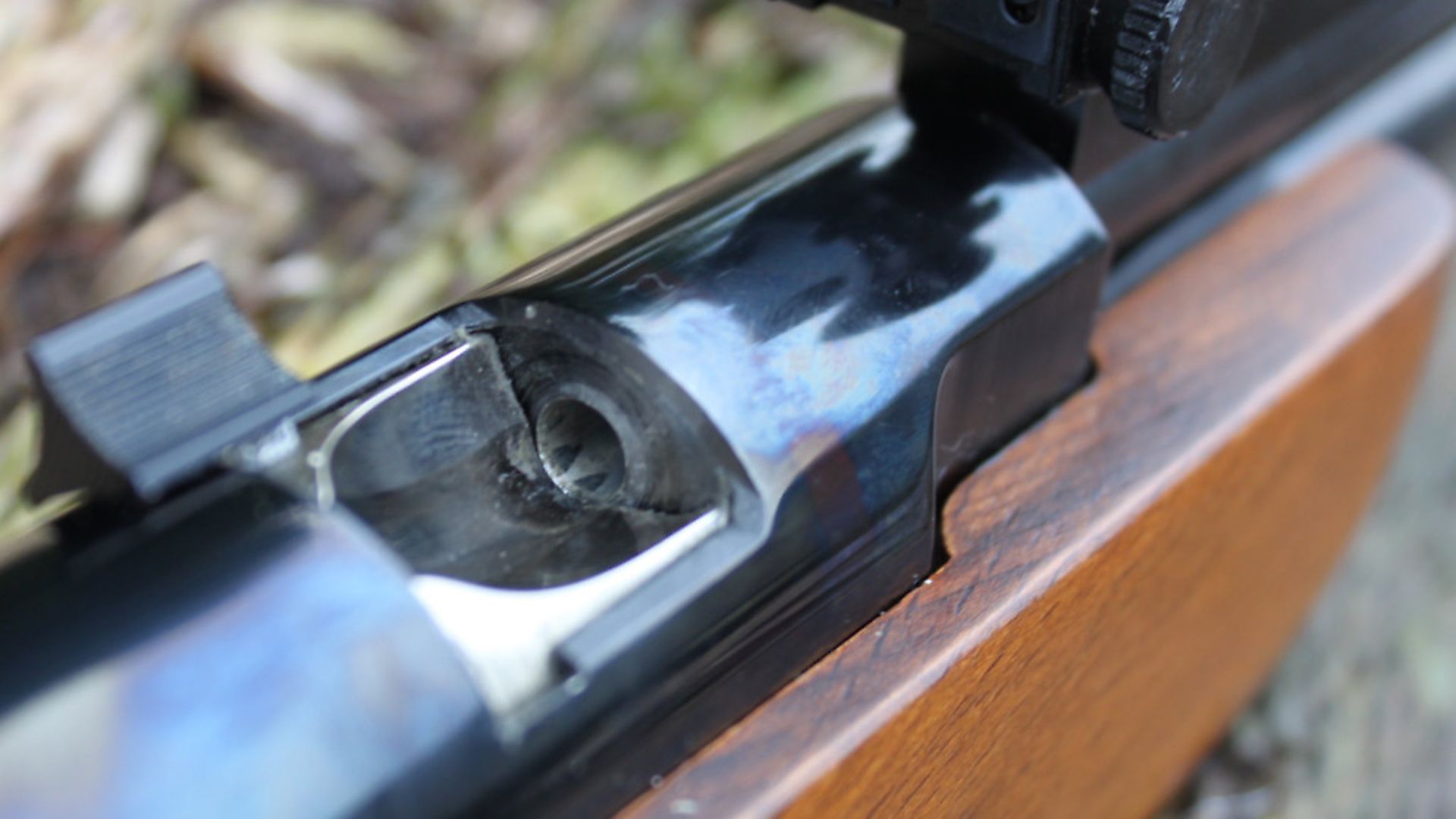 credit: Archant
credit: Archant
The rifle MUST be cocked first before attempting to rotate the breech. With the rifle uncocked the piston rests up against the end on the breech, effectively fixing it in position. If forceful attempts are made at opening the breech, the little thumb grip will snap off. It’s not the end of the world because they are replaceable, but it’s not something you really want to be doing.
Once the rifle is cocked, the breech turns easily to leave the pellet channel exposed. The pellet is guided down a little slide and into the breech before you thumb the breech back into position. The whole operation is all very smooth, and at no point do fingers come into contact with an open breech area. This evolutionary breech found its way on to the aptly named Airsporter RB2, replacing the decades old tap design.
As already mentioned, the Superstar was available as a .25 cal option – an interesting proposition to be sure, and one that I would dearly love to try, if only to see how big a hole it will make in a tin can!
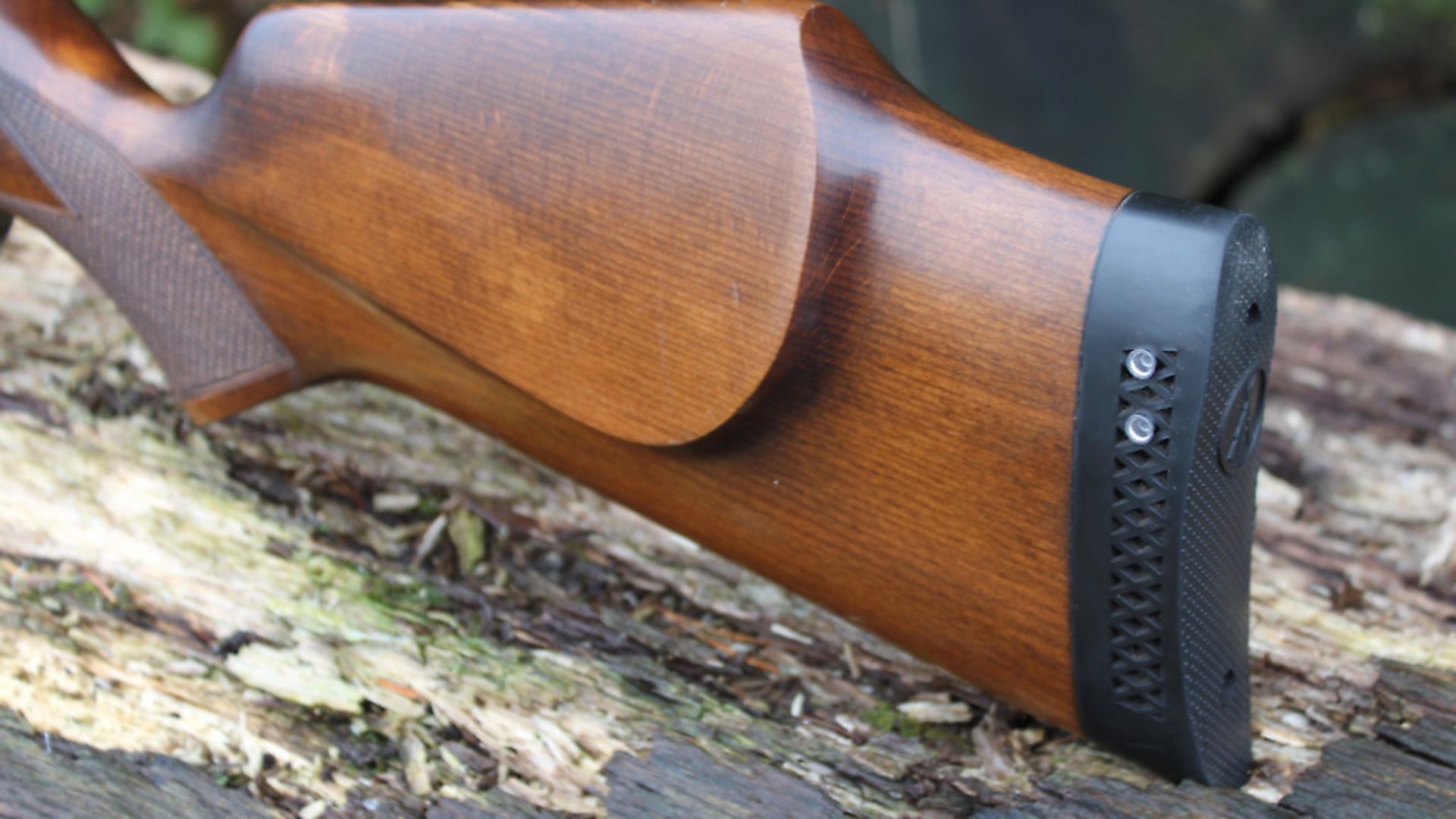 credit: Archant
credit: Archant
Trigger happy
The trigger on the Superstar is similar to that found on the Supersport custom, a version of a two-stage type, often termed a ‘pseudo’ two-stage trigger. Much as I love these rifles, I have to admit that the trigger is not a match for the Rekord or CD trigger units, its competition at the time of its availability. Having said that, as triggers go it’s pretty good, and perfectly useable.
It has the illusion of a two-stage device, but the first sprung stage does not reduce sear engagement – that remains the same until the trigger breaks. The adjustment screw in the trigger blade actually adjusts the tension on the blade, but does not change the amount of sear engagement. In some respects it could be argued that this is quite a safe design – many triggers I have seen adjusted so that a wind blowing the wrong way will discharge them. Some improvement might be possible by a mild polishing of the sear surfaces – ‘mild’ being the operative word because any re-profiling of the sear could spell disaster. On the subject of safety, there is a simple, resettable sliding safety on the right side, which is effective in use.
Taking stock
These rifles feature a beech stock usually stained to the same shade as that found on the Supersport.
My own example has an attractive hue, and sports a rather high cheek piece, which I would usually expect to find on a scope-only rifle. Although the rifle comes with a good set of open sights as standard, I suspect that most people over the years remove these in favour of a magnifying optic. It’s sad to see second-hand guns sold without their open sights, my local gunshop recently found a drawer full of new open sights, removed from new guns on the owners’ request. If you do remove them, make sure they are stored safely because replacements are quite costly.
Good provision is made for the scope user, in the form of the maxi-grip scope rail that provides a firm platform for mounting. Its design incorporates rubber strips that help to mitigate the forces produced by a recoiling rifle. These rails, at 13mm, will be wider than the accepted standard, so it is best practice to use BSA’s own mounts, or those specifically made by Sportsmatch for this application.
Shooting the ‘Star
Many people regard this rifle as one of the finest to emerge from those famous factory doors in Birmingham, and this would be difficult to argue against. The ‘Star even in full-length configuration is not unwieldy and hides its weight particularly well – for a full-power rifle, the cocking effort is relatively light.
When using my own recently purchased rifle, I was struck by two observations:
The first was that there seemed to be a lack of the usual mechanical noise – read that as ‘twang’ – as you would expect to hear on a gun of this era. This led me to think that the gun had received a tune of some sort, but some rudimentary examinations failed to support this idea. Sometimes, an excess of grease can mask this issue, but usually in these cases I would expect to see some dieseling because overuse of the grease pot usually extends to, and beyond the piston seal. No plumes of blue smoke or aroma of burnt oil were evident, so all that went against the ‘diesel’ hypothesis.
The second observation was the distinct lack of recoil, which I assumed meant that the gun was low on power, but against this was the fact that it was hitting the target with definite authority at 30m. A quick check over the chronograph gave a healthy muzzle energy of 11.4 ft.lbs. This rifle was proving to be a conundrum; low recoil, full power, the sort of result an airgun tuner has dreams about, all from a rifle about 25 years old. To add to the confusion, I have since had verification that the rifle has never been stripped. Maybe this was an experimental super-gun that shouldn’t have left the factory. Well, even if it is – no, BSA! You are not having it back!
On target
Good shooting characteristics aside, how does that translate to putting those holes in the target?
Over a 30m range, I had groups hovering around 20mm with JSB Exacts and RWS Superdome, shot from a simulated hunting stance – standing, forearm rested against a tree. Under more supportive conditions, I am sure these figures could be improved upon. With the gun shooting this well, I am loth to interfere with its inner workings at present, until such time as it needs it.
‘Oh no!’ I here you cry. ‘We wanted to see it stripped, especially that rotary breech!’
Fear not, dear readers. You will have your wish. I have another Superstar Mk2 carbine, which is not in quite as good fettle as this one and definitely needs some massaging. For this lucky lady, I have something special – some internal components from a famous British tuning house. I’ve already said too much, so I’m afraid you will have to wait until next time to find out more.
Visit the BSA Guns website here.